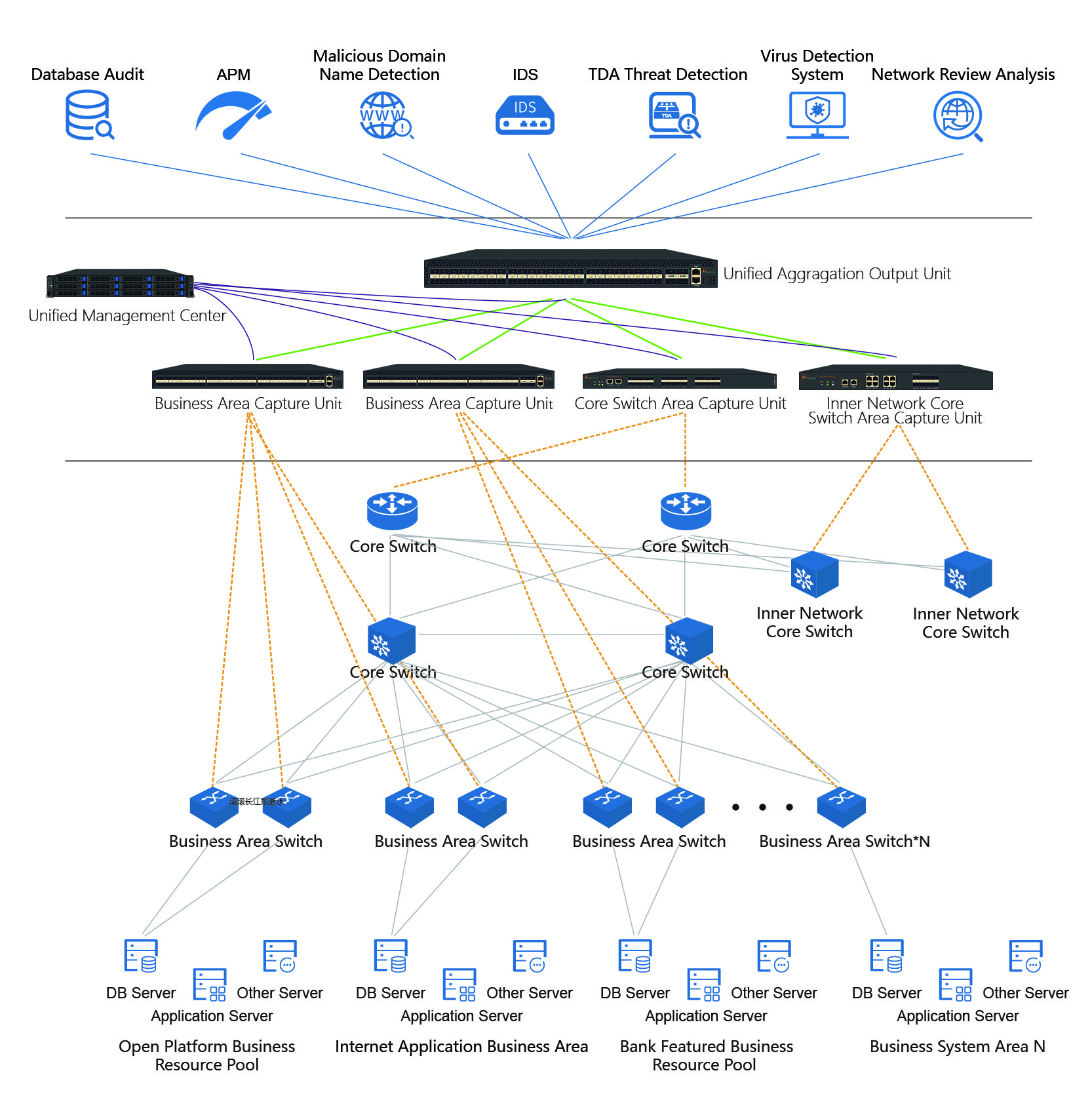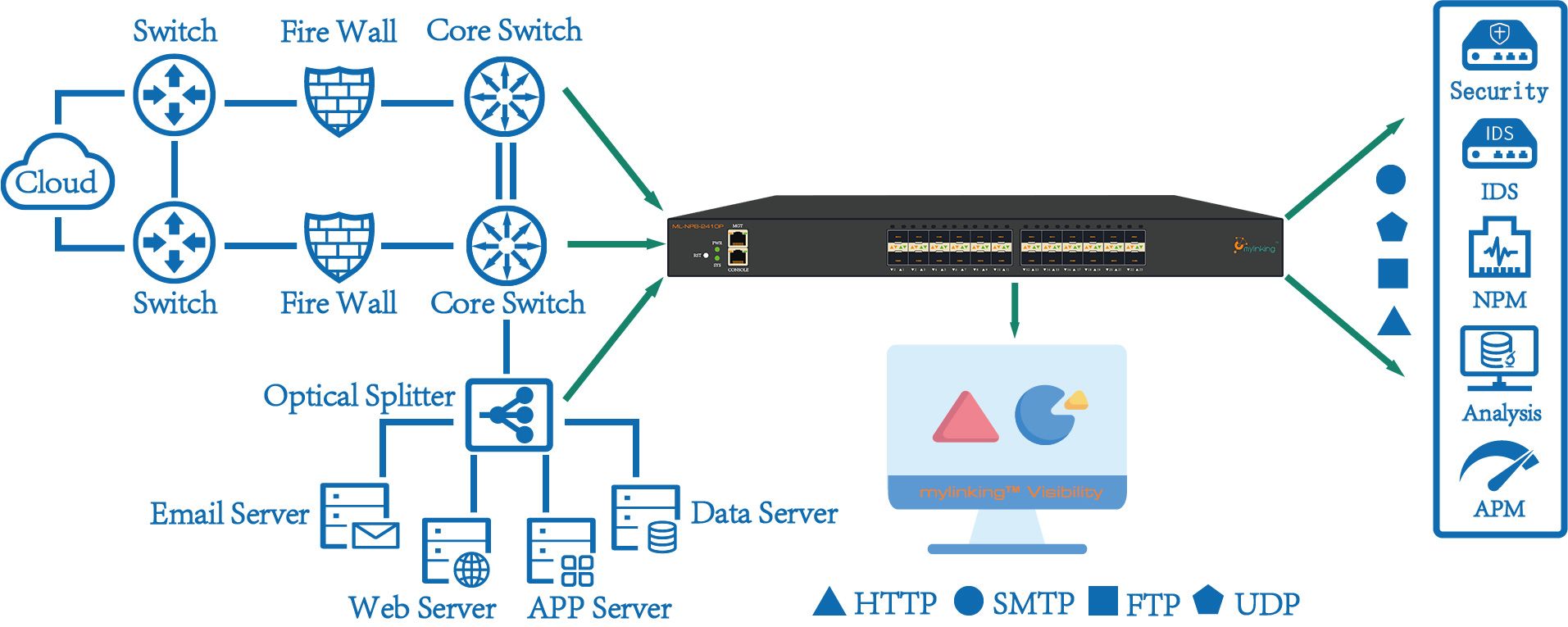Why Does Your Data Center Need Network Packet Brokers?
What is a network packet broker?
A network packet broker (NPB) is a technology that uses a variety of monitoring tools to access and analyze traffic across a network. The packet broker filters collected traffic information from network links and distributes it to its appropriate network monitoring tool. By having advanced filtering capabilities, an NPB can help provide better data performance, tighter security, and a faster way to determine the root cause of any issues by using advanced application intelligence. An NPB increases network efficiency while simultaneously lowering your costs. Network packet brokers can sometimes be referred to as data access switches, monitoring switches, matrix switches, or tool aggregators.
In today's digitally driven world, data centers play a crucial role in managing and storing vast amounts of information. With the increasing demands for reliable and efficient network performance, it is essential for data centers to have network packet brokers (NPBs) in place. Even if a data center hasn't deployed 100G ethernet yet, an NPB can still prove to be extremely beneficial.
Within a data center, various tools are employed to monitor network performance, provide visibility, and mitigate threats and bad actors. These tools rely heavily on a continuous stream of packets to function effectively. However, without an NPB, managing and distributing these packets can become a challenging task.
An NPB serves as a central hub that collects, organizes, and distributes network traffic to the required monitoring or security tools. It acts as a traffic cop, ensuring that the right packets reach the right tools, optimizing their performance and allowing for better analysis and troubleshooting.
One of the main reasons why a data center needs an NPB is the ability to handle increasing network speeds. As technology advances, network speeds continue to skyrocket. Traditional network monitoring tools may not be equipped to handle the volume of packets generated by high-speed networks such as 100G ethernet. An NPB acts as a traffic regulator, slowing down the network traffic to a manageable speed for tools, ensuring accurate monitoring and analysis.
Furthermore, an NPB provides scalability and flexibility to accommodate the ever-growing demands of a data center. As network traffic increases, additional tools may need to be added to the monitoring infrastructure. An NPB allows for easy integration of new tools without disrupting the existing network architecture. It ensures that all the monitoring and security tools have access to the required packets, irrespective of the network's size and complexity.
Data centers also face the challenge of managing traffic from different points within the network. With distributed architecture becoming more common, it is essential to have centralized visibility and control over network traffic. An NPB acts as a central aggregation point where all the network traffic converges, providing a comprehensive overview of the entire network. This centralized visibility allows for better monitoring, troubleshooting, and security analysis.
Additionally, an NPB enhances security within a data center by providing network segmentation capabilities. With the constant threat of cyberattacks and malicious actors, it is crucial to isolate and inspect network traffic to detect and mitigate any potential threats. An NPB can filter and segment network traffic based on various criteria, such as source IP address or protocol type, ensuring that suspicious traffic is sent for further analysis and preventing any potential security breaches.

Moreover, an NPB also plays a vital role in network visibility and performance monitoring. It provides detailed insights into network traffic, allowing data center administrators to identify bottlenecks, latency issues, or any other performance concerns. By having a clear picture of the network's performance, administrators can make informed decisions to optimize the network and improve overall efficiency.
In addition to these benefits, an NPB also simplifies network monitoring infrastructure by reducing the number of monitoring tools required. Instead of deploying multiple standalone tools for each monitoring task, an NPB consolidates the functionalities into a single platform. This consolidation not only saves space but also reduces costs associated with purchasing, managing, and maintaining multiple tools.
Furthermore, an NPB improves the efficiency of monitoring and troubleshooting processes. With the ability to filter and direct specific packets to the required tools, data center administrators can quickly identify and resolve network issues. This streamlined approach saves time and resources, ensuring minimal downtime and maximizing network availability.
In conclusion, an NPB is an essential component of any data center infrastructure. It provides the necessary capabilities to manage, distribute, and optimize network traffic, ensuring efficient monitoring, security, and performance analysis. With the increasing demands of high-speed networks and distributed architectures, an NPB offers the scalability, flexibility, and centralization required to meet these challenges head-on. By investing in an NPB, data center operators can ensure the smooth operation and robustness of their network infrastructure while effectively mitigating potential threats and safeguarding valuable data.
Post time: Sep-13-2023





